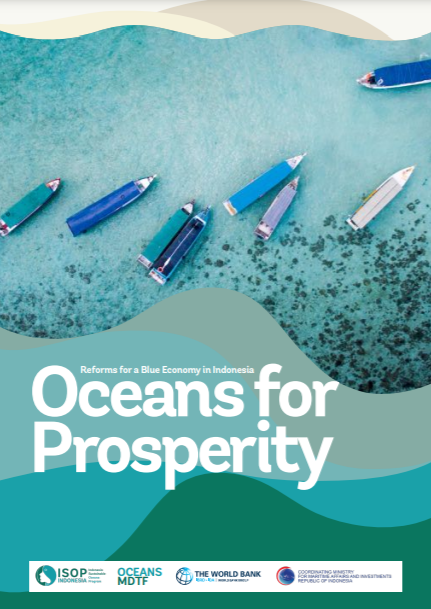Oceans are central to Indonesia’s prosperity through economic activities, including capture fisheries and aquaculture, coastal tourism, marine construction, and transportation. Indonesia has the world’s second largest fishery sector worth around US$27 billion to GDP and providing 7 million jobs and over 50 percent of the country’s animal-based protein needs. Oceans are a key asset for the country’s tourism industry, worth around US$21 billion to GDP in 2019 (marine and non-marine).
This report describes an integrated and multi-sectoral blue economy strategy as the key to improving marine and coastal activities, equal opportunities, and livelihoods in Indonesia. Fisheries and coastal tourism are the most significant sectors to develop and transform based on a foundation of healthy and productive marine and coastal ecosystems, including marine plastic pollution reduction and marine conservation.
While recovery from the impacts of the COVID-19 pandemic will be the priority of all governments over the short- and medium-term, there are opportunities to align recovery efforts with the long-term needs of oceans sectors. Key management systems—such as integrated tourism master plans, spatial plans, and harvest strategies for fisheries—could be further developed, tested, and implemented in a context of low demand and low development pressure. As the recovery progresses, these systems would gradually become binding. Recovery packages could be structured to promote livelihoods and jobs while strengthening long-term coastal ecosystem resilience. These could include labor-intensive coastal and marine conservation and restoration activities in hard-hit tourism-dependent communities, and livelihood diversification programs in fishing communities to reduce pressure on overexploited stocks and support transitions to more productive sectors.
